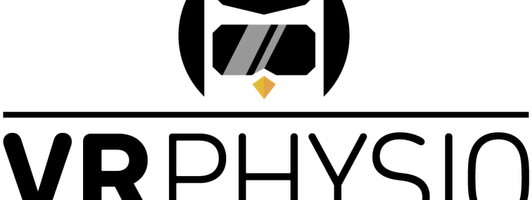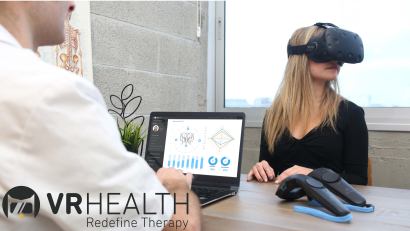VR Physio: Solving Neck Problems

VR + physiotherapy
Intro
VR Physio is a Boston and Israeli based startup attempting to tackle the challenges of the physical therapy industry by leveraging a combination of virtual reality (VR) hardware and software and gamification.
Founder Eran Orr thought of the startup idea as a potential solution to a personal problem. Eran had neck problems, while working for the Israeli army [1]. Sharing with a local newspaper, Eran realized that his musculoskeletal injury could have been prevented through exercise and therapy. Digging in to customer discovery mode, Eran discovered that neck injuries are common and could be caused from a variety of reasons from working prolonged hours in front of a computer to external force events, such as a car accidents.

Figure 1: VR Physio hardware [5]
VR Physio raised approximately three quarters of a million USD from Israeli seed crowdfunding platform Exitvalley.
The problem
Traditionally, the physical therapy industry prescribes a set of increasingly challenging stretching and strengthening exercises. The patient is required to perform sets of repetitions anywhere from a few times per week to a few times per day. The exercises can be boring, time-consuming and disengaging. Patients do not receive feedback on the proper form of their exercises, while performing exercises from home [3]. Even while at the therapist’s office, it is difficult to track, provide feedback to and institute changes to a physical therapy routine.
Value Creation
VR Physio provides providers medical providers such as clinicians or physical therapists with a piece of VR hardware, optional biofeedback sensors, optional weights. The combination of VR hardware and software enables a gamified physical therapy experience, which shift mindshare away from boring, repetitive tasks towards entertaining and rewarding physical + virtual experience.

Figure 1: In-app view. [4]
The company is pursuing FDA medical device approval.
The device is designed to prevent neck injuries from occurring and to help rehabilitate patients who have neck injuries.
Remote data collection and diagnostics allow for remote treatment and feedback from medical and physical therapy professionals.
The company indicates that data collection by the app also generates value through correlation.
In it’s crowdfunding campaign trailer, VR Physio also advertises a social component of doing exercises together with friends [1].
Value Capture
VR Physio has two part business model. First, the company sells the hardware and optional sensors and weights at a fixed cost (the author most guesses a cost + model). The sale cost is on the order of $350/device. The client receives VR Physio app at no cost [2].
Second, the startup has selected a freemium app model, with additional features and gamification modes costing incremental to the base hardware + software purchase.
Although not confirmed, VR Physio also hints that providers can also charge physical therapy customers for access [2].
No concrete plans are laid out for monetizing the data stream generated by VR Physio.
Assessment and Future Direction
VR Physio has selected a tangible customer problem and beachhead market in neck injuries. The company has discovered that physical therapy can be boring, monotone and unproductive if patients do not follow up on exercise schedules.
The startup has chosen a hybrid business model. The cost/cost+ segment offsets capital hardware costs, improving cash flow. In-app purchases, allow for subsequent revenue stream. The revenue potential of subsequent in-app purchases is unclear. VR Physio would be wise to consider a subscription type model.
While tackling neck physiotherapy as a starting point is a great beachhead market, the potential of VR + physiotherapy to solve anything other than neck problems is limited at best.
VR Physio’s test beyond solving for neck problems will be expanding their tech + physiotherapy knowledge beyond VR and neck injuries.
References
[1] Time of Israel. VR Physio uses virtual gaming to help pain in neck http://www.timesofisrael.com/vrphysio-uses-virtual-gaming-to-help-pain-in-neck/
[2] Exitvalley.com. VR Physio https://www.exitvalley.com/VRPhysio[12210]?a=1&WebLang=EN
[3] VRPhysio.com http://www.vrphysio.com/
[4] https://www.exitvalley.com/ProjIMG/12210/images/feature-1.png
[5] https://www.exitvalley.com/UsersData/Images/%7B0988F847-B256-4E83-A154-37D03C6A6681%7D.jpg



Hi Boris. This is a really interesting use case for VR. Although if the client goes to the therapist just to interact with Physio, I can foresee resistance from physical therapists because VR Physio decreases their value add and could possibly even eliminate the need for them?
On the other hand, going direct to consumer would also have many issues because of the high price point, need to educate consumers, and potentially regulatory barriers. How do you think Physio should deal with these distribution channel challenges?
Super interesting post, Boris! Give it up for Israel!
If VR can tap into the health industry, it’ll be one hell of an achievement. I wonder if there are any startups focusing on eye exams. I can totally see optometry being disrupted here almost instantaneously.
Interesting point Yuval. It’s an interesting question whether optometrists duties can be performed through a VR headset. Contrary to my response to Chun and physical therapy, I think you may be onto something here. Unlike physical therapy, where a doctor is required for diagnosis and prescription of a treatment plan, an optometry device may be able to diagnose at least a base level of eye exams.
Perhaps there is a use case here in telemedicine or in disrupting complicated and expensive machinery at the optometrists office.
Chun, thanks for your comments. I view VR Physio as a supplemental tool for physical therapists, medical professionals and clients undergoing therapy. I do not see the product replacing a physical therapist or a medical doctor. One of the challenges that VR Physio is trying to solve is how boring and monotone PT can be. Activities are repetitive and boring. Clients often skip treatments and do not show up to PT appointments because of how boring activities can be. In my view, this product only works in partnership with medical professionals. Not sure of regulations in the space, but VR Physio is seeking some form of FDA clearance.
Great post Boris. Interesting that companies are already thinking about using VR to address real world health issues when there is a lack of compelling entry level media/gaming content.
Love the post Boris. I think this is really interesting. My first thought, and maybe they are working on this with partners in the medical industry, but wouldnt physical therapists and rehabilitation centers be wary of this technology due to how easy it would be to replace them? I imagine a world where after years of working the bugs out, and insurance provider just ships you a vr headset and says do your own therapy instead of sending you to a doctor.
That is a very interesting post Boris. Most healthcare VR that I came across were targeting the surgery area of healthcare. This one seems to have caught on a very pertinent problem which is common today and even affects young people. However, they may think of eventually bringing down the cost of the gear and mass market it considering that this can be used both for preventive and curative care.
Having spent many hours doing physical therapy (runner problems), I see a ton of potential for integrating VR into the space. And as you’ve said in the comments, I also see it as a complement and not a substitute for physical therapy. Physical therapists use manual therapy techniques that could not be replaced by VR, and I imagine many would welcome a tool that got their patients to actually do their exercises between appointments.
One downside I see is that people who have a one-time injury may not want to purchase the equipment. Renting it, though, seems totally reasonable, and pharmacies already do this for other equipment. I wonder if and how they should target pharmacies or someone similar as a channel partner and what that arrangement might look like.
Good points Jess – you are hitting the key issues. I struggle to see this device widely applied and used in the home – whether through purchase or loan. Rather, I see it as increasing engagement, motivation and feedback in the clinic.
Great Post! This is a really interesting application of VR, and one that I hope succeeds. I’d be very curious to get your thoughts on how the ecosystem for medical VR applications will evolve in the future. Is there a natural fit for VR within the portfolios of the current big healthcare players (insurers, providers, device manufacturers), or do you think this becomes its own segment of the market? Thanks again for flagging this company!
Love the concept. But the business model still requires investment in a separate piece of electronic hardware. I think a sustainable approach would involve companies like this one focusing on content creation for more mass-market hardware and platforms. I am not sure if freemium is the right model for apps in this case. Customers would actually have a problem and would be willing to pay. I understand that selling content may significantly reduce the top-line here, but it seems to be a more sustainable approach.
Great post, Boris! This is really interesting to read that VR is making entry into consumer healthcare field. Fast forwarding few years when adoption of VR headsets is much higher, do you foresee this as a direct to consumer market where the therapist could just recommend the patients on what different ‘modules’ they should see/work-out?
This is really cool! I have spent months in physical therapy and think gamification is a great way to go. I wonder how many people buy the optional biofeedback sensors though as that must be key to ensuring that this works successfully but probably drives the patient cost up quite high.